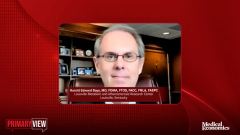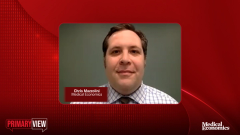
Complications of Overweight and Obesity
Reactions to the burden of overweight and obesity in the United States, in terms of prevalence and health complications.
Episodes in this series

Chris Mazzolini: Let’s take a look at the bigger picture. What’s the prevalence of overweight and obesity in the US population? Dr Christofides, go ahead.
Elena A. Christofides, MD, FACE: Approximately 40% of American adults 20 years and older were considered obese in the 2015 data the last time we checked it. That breaks down to 38% of the obese population were men and 41% were women. The problem with that number is that it’s almost double what it was 3 decades ago. More than a third of the population in the United States is considered obese. That’s a staggering number. Obese is measured with a BMI [body mass index] of 30 kg/m2 or greater. One of 2 or 3 people, when you walk on the street and look around you, are obese. One of 2, or 1 of 3.
Chris Mazzolini: Let’s move on to risks and complications because, obviously, they’re a huge part of dealing with this issue. What are the risks and complications associated with being overweight or obese? Dr Bays, why don’t you take this 1?
Harold Edward Bays, MD, FOMA, FTOS, FACC, FNLA, FASPC: About a decade ago we started doing a lot of publications and such to try to figure out how to sort this out, so it would make clinical sense for both the patients, and to clinicians who manage patients. It seems to me that you can generally classify the complications of the obese in 2 broad categories. There’s some overlap, but this is useful.
First, we have what’s called “sick fat disease”, and that’s useful for patients because if they say, “I don’t get it. The last time I was here, I didn’t have diabetes, hypertension, or dyslipidemia.” They may not say it that way, but you know what I’m saying. “Now, 20 lbs later, I have all 3. What’s going on?” It’s correct pathophysiologically but also clinically helpful to say, “What has happened is that your adipocytes have expanded, or grown, or hypertrophied, and as your adipose tissue depose have expanded—particularly in areas such as the visceral fat and the fat surrounding the heart, or infiltration into the liver or muscle or the pancreas or whatever. What has happened is that these fat cells have become sick, and they’ve become dysfunctional, and this has resulted in all sorts of immunopathies, endcocrinopathies, and such that promote the most common metabolic abnormalities that we encounter in clinical practice.”
What are those? Those are diabetes, hypertension, dyslipidemia, and cardiovascular disease. This is fact. This is what we know to be true based on medical literature. Too many times you hear people say, “Obesity is not a disease.” And you’re like, “Where do you get that?” The fact is that if you have enlarged heart cells and your heart doesn’t work properly, we call that cardiomyopathy. I don’t hear people objecting to that. If your fat cells get too big, they’re dysfunctional and they’re promoting the most common metabolic abnormalities we see in clinical practice, that sounds a lot like a disease. That’s 1 broad category.
The other broad category is the biomechanical abnormalities. That’s called the “fat mass disease”. These are common things that most clinicians know, things like sleep apnea, thromboembolism, and orthopedic complications, which a lot of times, I don’t think we talk about enough. It’s interesting with orthopedics—it’s fat mass disease, but there’s a lot of inflammation that goes into orthopedics. There’s a little crossover. There are countless complications that occur with the disease of obesity. Broadly, you can attribute those complications to the adiposopathy—or the pathos of adipose tissue—the sick fat disease, or the fat mass disease, which are biomechanical abnormalities.
Transcript edited for clarity.
Newsletter
Stay informed and empowered with Medical Economics enewsletter, delivering expert insights, financial strategies, practice management tips and technology trends — tailored for today’s physicians.













